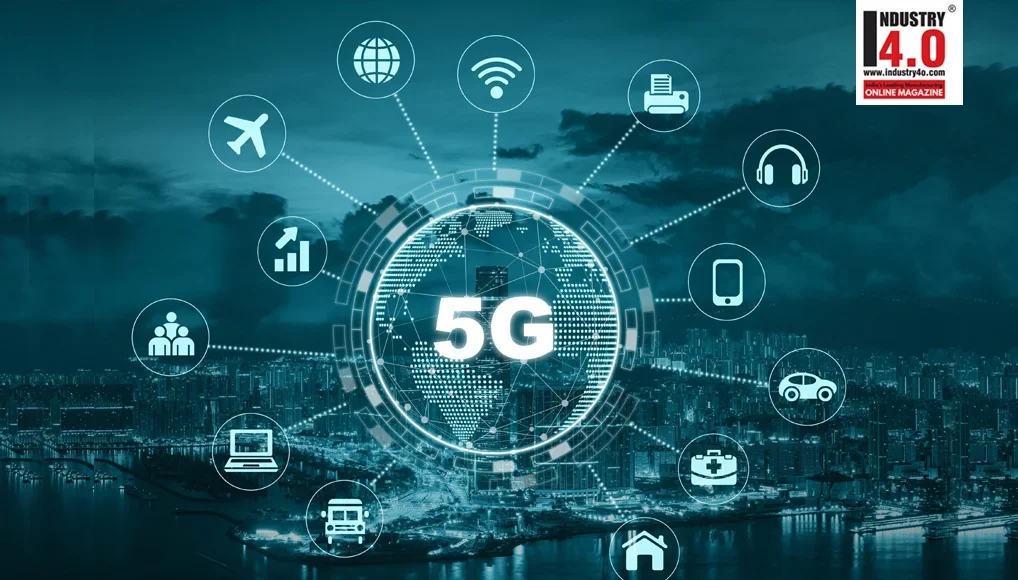The editorial team at www.industry4o.com, spoke to experts and leaders across the manufacturing sector to solicit their views on the possibility of 5G enabling industry4.0. Based on the perspectives of industry leaders and technology experts, the viewpoints in the article are aimed at highlighting the benefits and flexibility of 5G what it offers for the Industry4.0. Our focus was to identify what will work and what will not. Ideas from around the world and hyper local solution are what we needed to find. Remember we are in this together.
From Artificial Intelligence to Industry 4.0, 5G is set to change radically the way we live and work. Capitalising on Industry 4.0, manufacturers can make use of connected systems to get crucial information on their operations. These insights can be used to enhance operational efficiency.
Here’s what you need to learn about the scope of 5th generation of Industry 4.0:
80% of the industrial communication system is wired; however, manufacturers are now looking at the possibility of substituting the same with 5G or other wireless technologies to get extra benefits.
Outside the home, factory-connected objects and machines show a greater promise for a new industrial revolution i.e. industry4.0; waste management and smart transport are opening up new frontiers for creating ‘smart cities’; and connected healthcare gadgets and new wearable have the potential to bring in desirable and appropriate treatment options for patients and deliver a huge amount of data to researchers.
Coupled with this, 5G will allow logistics and transport to transform the potential of automated vehicles and remote monitoring together with automated operations.
The Intersection of 5G and Industry 4.0
5G doesn’t itself remodel production lines or define the industrial process. It may, however, facilitate the development of new operating models and technologies. 5G networks provide manufacturers with the opportunity to build smart companies and take advantage of technology mergers.
5G technologies provide the network features that are essential for manufacturing i.e. Ultra-Low Latency, High Bandwidth, Network Slicing, Connection Density and high reliability for critical applications and protected ubiquitous connectivity.
Manufacturers presently rely on fixed-line networks to meet these requirements. The 5G technology will facilitate higher flexibility, reduced cost and shorter lead times for remodelling, layout changes and alterations of the factory floor.
The retail industry could see the deployment of Augmented Reality technology across 5G networks changing shopping experience as well as IoT-linked devices hugely streamlining the supply chain.
Industry leaders’ thoughts on 5G’s capacity in driving industry4.0
“Qualcomm President Cristiano Amon reckons that the potential is enormous for business. Truly, 5G is going to be the mainstay of industry4.0. Corroborating the Qualcomm-conducted survey results, he said that 5G could support upto $ 12.3 trillion worth of goods and services in industries such as healthcare, retail, education, entertainment, transport and more.
Qualcomm expects the 5G value chain to mop up revenue of up to $3.5 trillion in 2035 and support upto 22 million jobs. Qualcomm also envisages that 5G will accelerate global GDP growth by $3 trillion cumulatively from 2020 to 2035”, he added.
5G when compared to other industrial communication technologies
With its capacity to build a virtual network or a ‘slice’, 5G could bring in a change in connectivity in the industrial sector. The plan is that ‘slice’ can be tailored to the specific use or requirements of a group of users, for example, by favouring important devices vs. non-important devices. Each virtual network or ‘slice’ can be isolated in such a way that a cyber- security breach in a single ‘slice’ is contained and cannot be diffused.
It makes 5G better suited to companies than the existing options. Here’re the reasons:
- Wi-Fi: Less speed when compared to 5G and 4G is often struggled to meet the demand for more data services. Further, it is quite easy to hack.
- Ethernet: Needs physical cavalry between machines, potential risk of failure and maintenance.
- 4G LTE: It doesn’t support the required 1-2 layer performance (scheduling, latency, redundancy, and jitter).
How does 5G meet the demands of industry4.0 ?
5G is designed to deliver faster data speeds, higher density, network reduced latency, ultra-reliability and mobility at accelerated speeds.
5G does meet the requirements of industry4.0 and the companies are investing in it in a big way. Globally, companies are pumping in over $ US 900 billion every year until now. However, it will take increased time before the industry completely accepts it.
While 5G is the future wired networks such as EtherCAT will continue to call shots in the Industrial Communications Scenario. Manufacturers will invest in 5G and work on many PoCs in partnership with the right stakeholders to satisfy themselves about 5G and experiences the benefits in action.
At present, for example, Audi uses Wi-Fi as the principal wireless technology in its production facilities and hooks up its robots mainly via Ethernet. Now, it plans to make its production ‘more agile and flexible’ Audi has begun testing 5G as a method to control its robots. The trials are underway and the outcome has been ‘satisfactory’.
Quick Takeaways:
5G will anchor the fourth industrial revolution and in the near future, it will provide the infrastructure that we need to implement the innovations that show potential today.
Further, the collaboration between stakeholders in manufacturing and mobile industry ecosystems is the key to achieving the enormous potential of the amalgamation of industry 4.0 and 5G. To sum up, it is time to start planning how businesses and industries can make competitive use of the modern capabilities of new technologies and the additional efficiency, productivity and environment that they could deliver to their mobile workforce.
Editorial team of INDUSTRY 4.0 can be contacted at [email protected]
Also read our earlier articles










